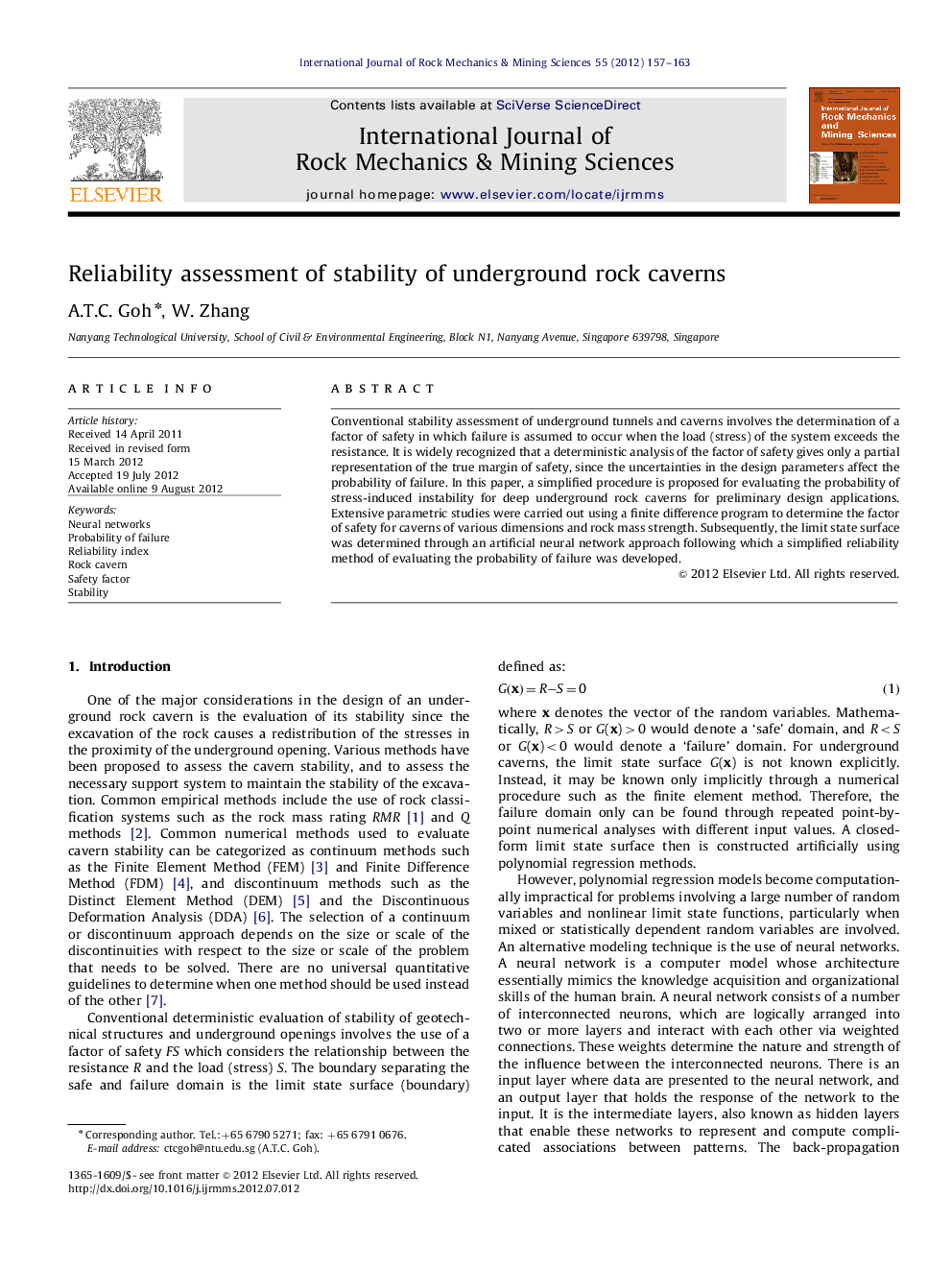| Article ID | Journal | Published Year | Pages | File Type |
|---|---|---|---|---|
| 809465 | International Journal of Rock Mechanics and Mining Sciences | 2012 | 7 Pages |
Conventional stability assessment of underground tunnels and caverns involves the determination of a factor of safety in which failure is assumed to occur when the load (stress) of the system exceeds the resistance. It is widely recognized that a deterministic analysis of the factor of safety gives only a partial representation of the true margin of safety, since the uncertainties in the design parameters affect the probability of failure. In this paper, a simplified procedure is proposed for evaluating the probability of stress-induced instability for deep underground rock caverns for preliminary design applications. Extensive parametric studies were carried out using a finite difference program to determine the factor of safety for caverns of various dimensions and rock mass strength. Subsequently, the limit state surface was determined through an artificial neural network approach following which a simplified reliability method of evaluating the probability of failure was developed.
► Empirical equation relating Factor of safety to cavern dimensions and Q-index has been developed. ► Charts for preliminary design purpose are presented. ► FORM is incorporated with BPNN to calculate the probability of failure. ► Factor of safety and probability of failure must be used together.
